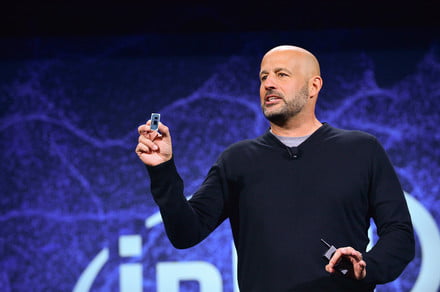At Aspen, Colorado’s Brainstorm Tech 2019 conference this week, Intel CEO Bob Swan shed some light on the future of Intel’s fabrication process by remarking that Intel is planning on beginning production on a 7nm die for its processors in 2021. The revelation follows only two months after the company’s Computex 2019 announcement of its first 10nm processors, the Ice Lake line, left many observers wondering when the CPU giant would catch up to its nimbler rival AMD, which showed off 7nm processors the day before. Not only is Intel just reaching 10nm manufacturing as AMD rolls out 7nm chips, but the Ice Lake chips Intel showed off are not intended for desktops, but exclusively for mobile or versatile 2-in-1 devices.
This admission of Intel’s shortcomings makes for a welcome sign for AMD, validating their aggressive strategy of die shrinks and price undercutting. Beyond AMD’s flashy Computex 2019 launch for its 7nm Ryzen 3000 CPUs, the manufacturer also has a threadripper waiting in the wings that Intel has no plans of contending with. Confidence is running so high over at AMD that they are also taking the GPU fight to Nvidia in a big way. Earlier this week, a high-level AMD executive boasted about duping Nvidia into setting less-than-competitive prices against AMD’s Ryzen RX 5700.
Intel’s woes don’t end with AMD’s lead on die size, either. If Microsoft goes forward with its rumored switch to Qualcomm, Intel will suddenly lose out on a massive opportunity to supply the highest-selling device in the tablet product category.
To say that Intel is on the decline, though, is to judge the situation prematurely. There’s a reason why the company has stayed on top for as long as it has, and part of it is that Intel continually explores new development options and researches new techniques. Currently, Intel’s biggest bet on the future is Project Athena, which aims to bring consumers superior performance by more tightly linking processing and networking in hardware for the next generation of mobile and 2-in-1 devices. Intel has also devised a new way to package different hardware components together with its Foveros initiative. It might also be the case that Intel is taking a conservative approach with its CPUs to counterbalance its entry into graphics cards with its impending Xe GPUs, which would instantly have to compete with both AMD and Nvidia.
Either way, while Intel may not be able to match AMD in die size in the short term, it has proven that it is keeping up in performance so far, which most consumers probably care more about than form factor. Only if Intel slips on that front (if it even does slip) will Intel really have reason to worry.
Editors’ Recommendations
- Intel vs. AMD at Computex 2019
- Ice Lake benchmarks show Intel isn’t done firing back at AMD
- Intel’s Computex 2019 keynote: Here’s how to watch and what to expect
- Intel doubles down on 10nm in 2019, pledges to never have shortages again
- AMD vs. Intel

